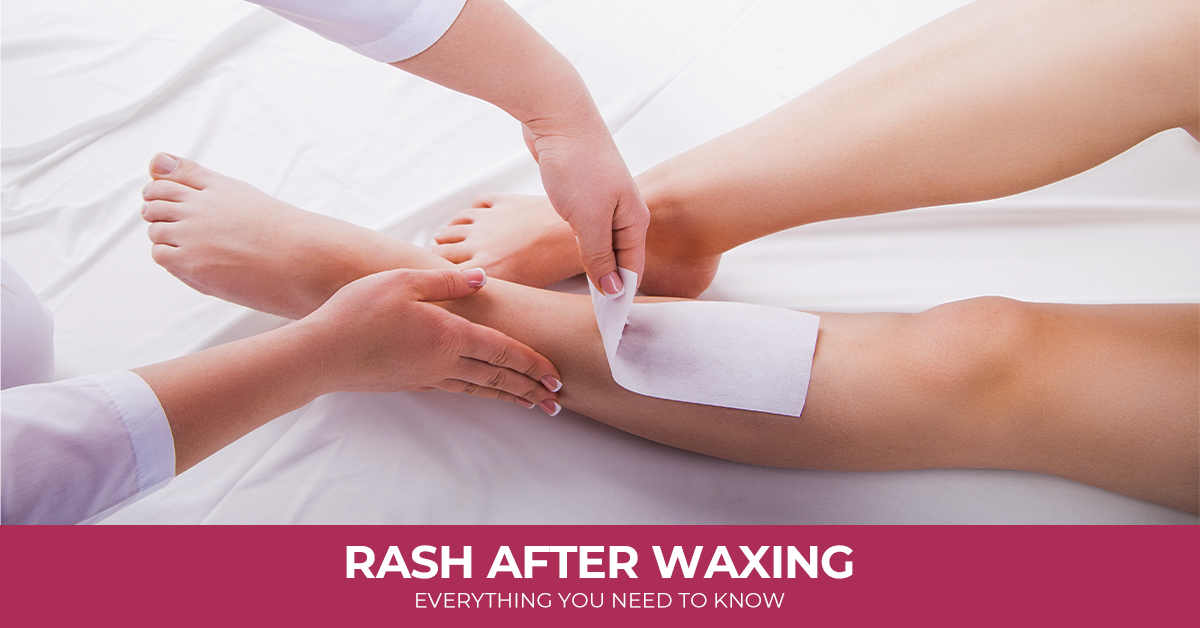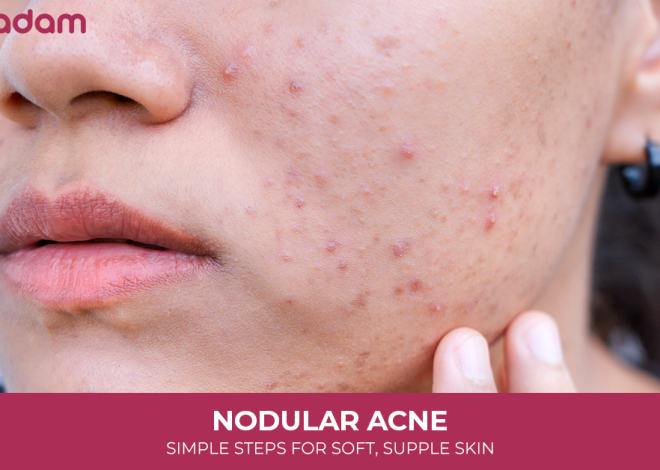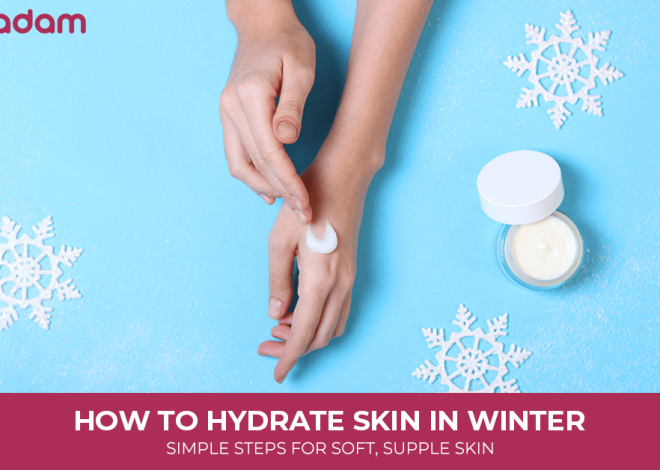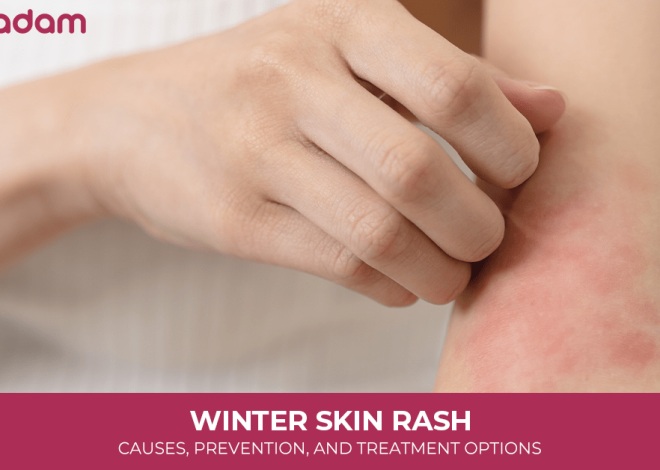
Rash After Waxing: Everything You Need To Know
While waxing is a go-to option for unwanted hair. It often leads to a rash on your skin. Having an after-waxing rash is not something anybody wants, but it does sometimes happen immediately following a waxing service.
Here’s a guide on rash after waxing, explaining what causes them and the most effective ways to soothe and prevent them.
Table of Contents
Rash After Waxing Explained
A waxing rash or experiencing rash after waxing is one of the most common skin reactions after waxing. It appears as irritation, redness, or inflammation, mainly caused by the removal of hair follicles from the root. As these hairs are forcibly removed with wax, the skin might show a variety of reactions due to either the hair itself being removed or the wax being eliminated from the skin.
More Information For You: Biggest Skincare Mistakes
How To Get Rid of a Rash After Waxing
Following are the various precautions and all possible ways through which you can get rid of a rash after waxing.
1. Cool Compress
Apply an ice pack or a neat napkin soaked in cold water to the affected part. It will help to substantially minimize the appearance of the rash. Do this process for 15 to 30 minutes all over the part you have waxed.
2. Loose Clothing
Putting on loose-fitting clothes will be effective in reducing any skin irritation caused by waxing and its aftereffects. Wearing tight clothes is known to irritate the skin and might cause itching, especially during the summer.
3. Skin Creams and Gels
Apply a hypoallergenic body lotion or a moisturizer that is free from strong fragrances after your waxing session. This will help soothe your skin and decrease the rash. You can also apply a cortisone-based cream to treat inflammation in the skin.
4. Sugar Scrub
Sugar scrub is one of the effective ways of exfoliating your skin. Combine a teaspoon of sugar with any of the carrier oils of your choice, like coconut oil or olive oil. Next, exfoliate the skin post-waxing to stop ingrown hair. It will not only minimize the chances of waxing but will also help make your skin smooth.
5. Aloe Vera
Aloe Vera gel is the Ideal post-waxing remedy as it has calming and moisturizing properties that will help reduce the rash, inflammation, if any, and itching.
6. Essential oils
As per the severity of the rash, apply an essential oil mixed with a carrier oil to soothe the skin and minimize inflammation. The following are a few examples :
A . Lavender Essential Oil
You can combine 15-20 drops of lavender essential oil with 100 ml of calendula oil. Apply on the affected part to reduce any rash or redness after waxing.
B . Peppermint Essential Oil
Combine alcohol-free aloe vera gel or aloe-based cream with 20 drops of peppermint oil. Apply on the affected part for quick relief.
C. Geranium Essential Oil
Combine 100 ml of sweet almond oil with 20 drops each of geranium and peppermint essential oils. This combination helps soothe the skin and reduce irritation.
7. Warm compress
Just like a cold compress, you can even prepare a warm compress using a napkin dipped in hot water and apply it on the affected part for a certain minutes at a time.
8. Cleanse and Exfoliate
Cleanse the wax part with a mild soap and lukewarm water. Pat dry skin to minimize chances of irritation.
Difference Between Rashes, Red Dots, and Bumps After Waxing
After waxing, experiencing a rash on the skin is a common reaction, while bumps and red dots after waxing are specific types that can occur within a rash, often due to inflammation or ingrown hairs.
Here’s a more detailed breakdown:
1. Rash:
- Definition: A rash is a general term for any area of skin that becomes inflamed, itchy, or irritated.
- Causes:
- Inflammation: Waxing can cause temporary inflammation as the skin reacts to the hair removal process.
- Folliculitis: Inflammation of hair follicles, often appearing as small, pimple-like bumps.
- Ingrown hairs: When hair curls back into the skin instead of growing out, it can cause bumps, redness, and irritation.
- Contact Dermatitis: An allergic reaction to ingredients in the wax or aftercare products.
- Symptoms: Redness, itching, bumps, and sometimes swelling.
2. Red Dots:
- Definition: Small, red spots that appear on the skin after waxing.
- Causes:
- Inflammation: Redness is a common sign of inflammation as the skin reacts to hair removal.
- Folliculitis: Red dots can be a sign of folliculitis, where hair follicles become inflamed.
- Ingrown hairs: Redness can also be a sign of ingrown hairs.
- Symptoms: Small, red spots after waxing may or may not be itchy or painful.
3. Bumps:
- Definition: Raised areas on the skin that can appear as small pimples or raised areas.
- Causes:
- Folliculitis: Bumps can be a sign of folliculitis, where hair follicles become inflamed.
- Ingrown hairs: Ingrown hairs can cause bumps as the hair curls back into the skin.
- Allergic Reaction: In some cases, bumps can be a sign of an allergic reaction to the wax or aftercare products.
- Symptoms: Raised areas on the skin that may be red, itchy, or painful.
In Summary:
- Rash: is a general term for any skin reaction, while red dots and bumps are specific types of reactions that can occur within a rash.
- These reactions are often caused by inflammation, folliculitis, ingrown hairs, or allergic reactions.
- If you experience persistent or worsening symptoms, consult a dermatologist or healthcare professional.
Recommended Reading: How To Do Waxing At Home
Do’s and Don’ts of Post-Waxing Care
While it is easy to book a waxing appointment, there is often little discussion on how to reduce rash, red spots, or bumps after waxing. Here’s a list of do’s and don’ts for the first 48 hours:
| S.No | Do’s | Don’ts |
| 1 | Do moisturize after waxing to remove the wax residue. | Do not go out in the sun right after waxing. Wait for at least 24 hours to avoid hyperpigmentation. |
| 2 | Do wear loose clothing immediately after your waxing that allows your skin to breathe and prevent post-wax redness. | Do not apply talcum powder right after waxing as it may clog pores and cause ingrown hairs. |
| 3 | Exfoliate 3 days after getting a Brazilian or body wax. It helps prevent ingrown hairs. | Do not use fragrance-based products like deodorant and perfume after washing, as it might cause post-waxing redness. |
| 4 | Drink plenty of water to keep your skin hydrated from within. It helps reduce dryness or flakiness post-wax. | Do not go to the gym for a few days because excessive sweating might cause an infection and irritate your skin after waxing. |
| 5 | Do apply cooling gel or soothing lotion containing aloe vera or witch hazel to redness present after waxing. | Do not touch or scratch the waxed area with your hands to prevent transferring bacteria. |
Conclusion
Suffering from a rash after waxing is very common. The preventive tips, along with dos and don’ts as part of waxing aftercare advice, will help keep your skin in its best condition and save you from dealing with post-waxing side effects. But if you notice a rash that recurs every time you wax, you should get it checked by a dermatologist.
FAQs
How do you get rid of red bumps on legs after waxing?
To treat red bumps after waxing, use a cold compress or a gentle cleanser, and moisturize using fragrance-free products.
Is it normal to have red spots after waxing legs?
Yes, experiencing small red spots on the skin after waxing legs is a common and usually temporary reaction, as the hair removal process causes mild irritation and inflammation.
How to prevent a rash after waxing face?
To reduce rashes on your face after waxing, apply a cool compress, gentle cleanser, or over-the-counter cortisone cream, and avoid harsh products to prevent irritating the skin.
What is the cause of rashes after face wax?
Rashes after face wax can be due to inflammation of hair follicles, ingrown hairs, contact dermatitis, or simply skin irritation from the hair removal process.
How Do I Prevent Red Bumps on Legs After Waxing?
To prevent red bumps after waxing, focus on gentle aftercare: avoid heat and friction, wear loose clothing, cleanse the area gently, and use soothing products.
How long does it take for wax dots to go away?
Post-waxing bumps or irritation, often caused by folliculitis or ingrown hairs, typically subside within 24-48 hours or up to a week.
Which cream is good for waxing rashes?
Hydrocortisone cream is a proven remedy, especially for red, itchy bumps that appear after waxing.
What not to apply after waxing?
Post-waxing, do not apply scented products, tight clothing, or heat, as well as exfoliating or picking at ingrown hairs, for at least 48 hours.
Is Aloe Vera good after waxing?
The use of aloe vera gel after waxing is a vital step in replenishing the skin post-wax due to its ultra-soothing properties.
What do wax bumps look like?
After waxing, bumps might appear as small, red, raised, and at times itchy or tender spots, looking like a pimple or a rash.



